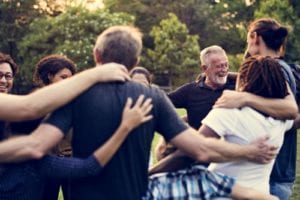The Sanctuary Model, constructed by Dr. Sandra Bloom, is a theory-based, trauma-informed, trauma-responsive, evidence-supported, whole culture approach that aims to build and/or change an organizational culture. It is a model because it all depends on the team and how they integrate this model. The goal of the sanctuary model is to provide a cohesive, integrative context from which healing can occur from both psychological and social traumatic experiences and the differences between everyone can be addressed.
Organizations who choose to use this model will work towards building a space where peace is the core mission and skills are developed on how to lead non-violent lives and generate teamwork. Here are just a few of the characteristics of an organization that uses this model:
- Members of the organization are strong, caring, resilient, compassionate, tolerant, knowledge seeking, innovative, cohesive, and more.
- Staff members are thriving, individuals trust one another to do the right thing, and clients are making progress in their own recovery.
- People understand that safety and comfort are not the same thing, and that change is important for growth.
- Tangible results of a sanctuary program include decreased staff turnover, decreased use of coercive actions, decreased critical incidents and staff injuries, and more.
- A community acknowledgeable of violence and works hard to maintain social immunity of violent acts whether it be physical, psychological, social or moral.
There are four main pillars to using the model:
Knowledge: Knowledge about people, people under stress, recovery and healing for people, groups, groups under stress, and healing and recovery for groups
Shared Values: Growth & change, nonviolence, empirical intelligence, social learning, open communication, social responsibility, and democracy
Shared Language: Safety, emotions, loss, and future
Shared Practice: Tools for the organization to use to succeed
Social work and other child-serving facilities that have used these tools in the past have had significant drops in restraints. Improvements have been seen in the children that have attended these facilities, and there has been evidence of reduction in hospitalization as well.
Organizations who wish to come together as a team and work towards peaceful interactions with patients may benefit very well from this model. There are so many tools offered within it, and teams typically have a better understanding of one another and of those who experience trauma. Having a working knowledge of stress and traumatic events and how it can impact individuals, as well as knowing has stress affects everyone, can provide a more mindful approach towards human services.
When you’re making a decision to change your life, you need a program you can trust. Avalon Malibu provides trusted results. Offering both primary mental health and substance use treatment, our full continuum of care seeks to heal mind, body, and spirit. For a confidential assessment and more information, call us today: 888-958-7511











